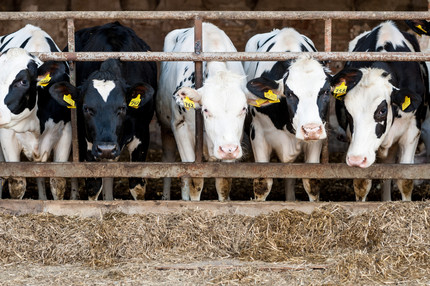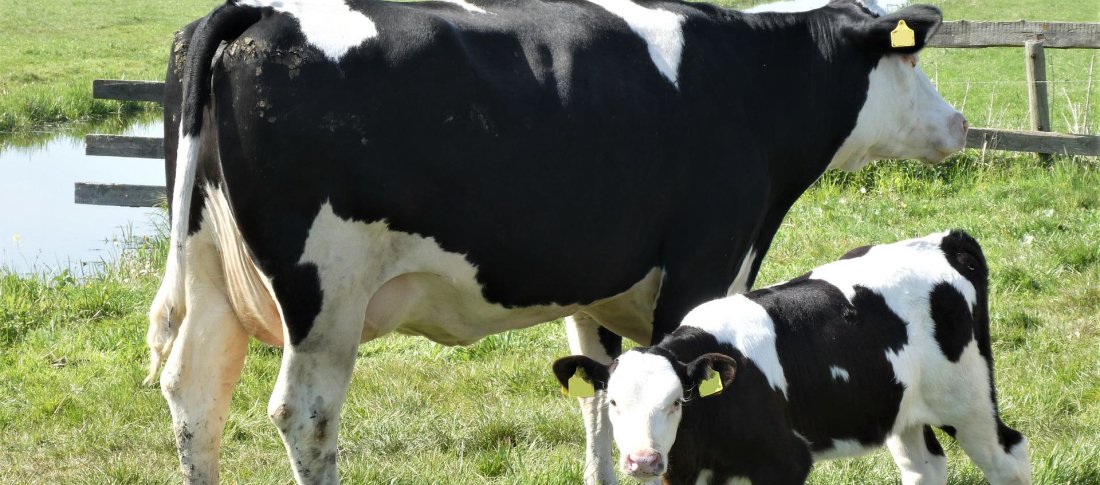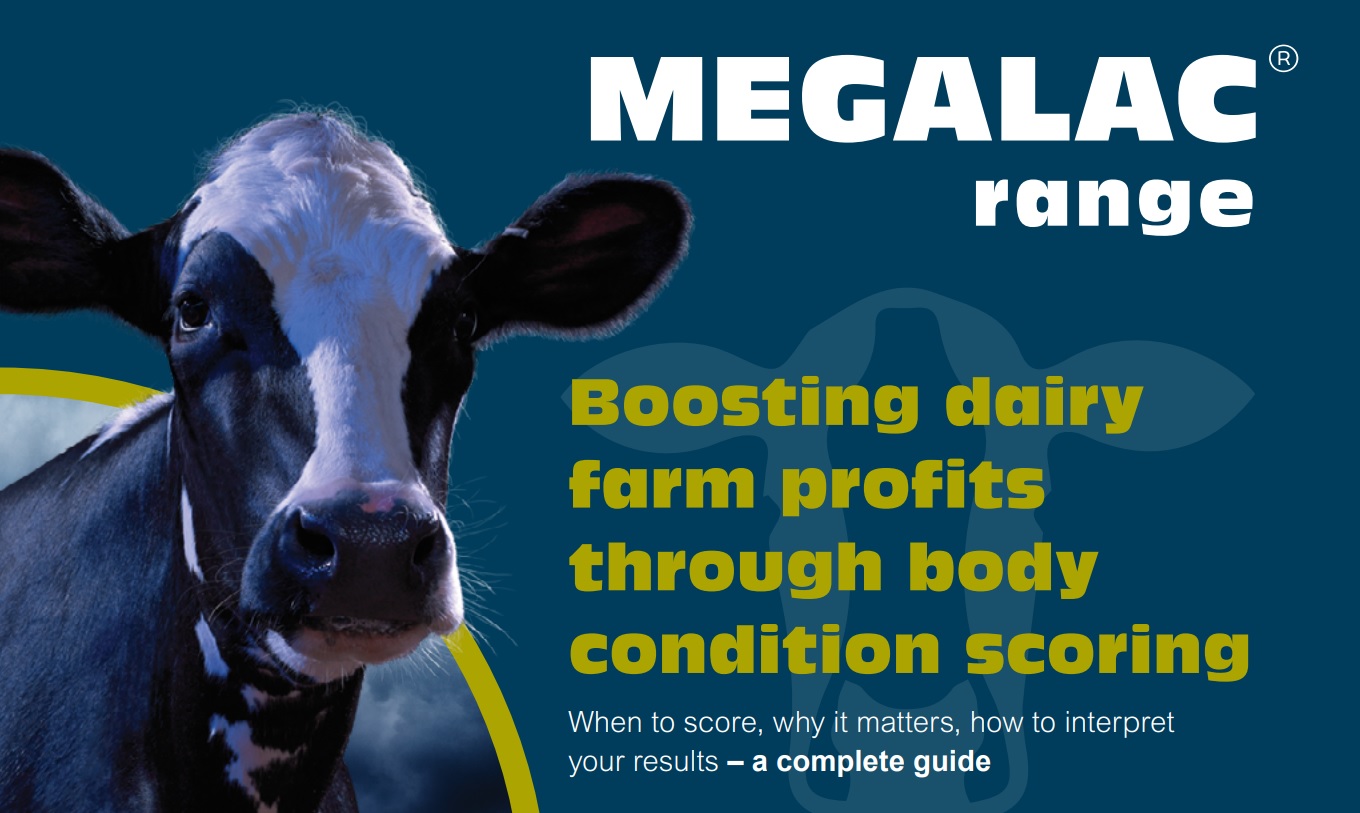Body condition scoring is an invaluable tool for dairy farmers and has benefits that stretch far beyond keeping tabs on the overall health and wellbeing of your herd. In this blog, we’ll cover all there is to know about the hows, whens and exactly why we put so much emphasis on the relatively simple art of body condition scoring your dairy cow.
So, what is exactly Body Condition Scoring?
Unlike weighing, which simply records how heavy your dairy cow is at that moment in time – which could vary depending on how much food and water she has consumed prior to stepping on the scales – body condition scoring (BCS) is a visual and tactile assessment of the condition of your cow.
A hands-on assessment of the flesh covering the short rib, loin, rump and tail head areas of each cow allows you to determine the overall condition of her on a 5-point scale - with 1 being extremely poor and 5 indicating that your cow is carrying too much fat.
This technique allows you to draw on your existing knowledge of each individual cow (because we know, you know each one is different) and monitor any changes in their condition. With practice, a honed eye and sense of feel, body condition scoring becomes a very quick process, with the potential to reap huge rewards.
>>>
Turn to page 6 of our handy eBook to learn exactly how to body condition score your dairy cow.
Why should you body condition score your dairy herd?
The process of body condition scoring assesses the body fat reserves on each dairy cow, which is something we know to affect the overall health and wellbeing, as well as the productivity and profitability, of your herd.
A score of 1 – 2.0 indicates a cow in negative energy balance, which will impact negatively on her milk production and fertility.
A BCS of 2.5-3 is around the optimum condition for a dairy cow coming to calving – standing her in good stead for peak productivity, milk fat percentage and fertility.
A body condition score of 3.5 – 5 would determine a cow to be overweight, which puts her at increased risk of metabolic problems and infections, as well as difficulties during and after calving. She could also be costing your dairy farm unnecessarily in terms of your feed bill – especially during late lactation.
When should you body condition score?
Regular body condition scoring makes it easier for you to catch changes in your dairy cow’s body condition and enables you to take action before it becomes a problem.
Ideally, each cow should be assessed at specific stages of the production cycle to enable you to maintain her in optimum condition throughout.
- Late lactation - 250 days in milk
- Dry-off
- Calving
- Post-calving examination - 21 days in milk
- Mid lactation
An assessment of your cow in early lactation is critical as her condition at this stage will have repercussions on the whole of the subsequent production period. With this in mind, it is at this time that the challenge is to minimise the extent of BCS loss to help achieve peak milk yield and quality, as well as optimum fertility for getting back into calf according to plan.
A further score in late lactation also enables you to act on any condition dropped during the lactation period and replenish any lost reserves to ensure she has enough energy stored for the following lactation. Conversely, an assessment at this stage also allows you to address a cow with a higher than optimum BCS.
How can you improve your herd’s Body Condition Score?
An optimum body condition score throughout the herd is, of course, what every dairy farmer dreams of, but the reality is a careful balancing act when it comes to energy provision vs requirement.
Some key elements of the diet to check are water, forage and fat.
Water – Cows can drink well-over 100 litres of water per day, so the provision of clean water is absolutely vital. Ensure troughs are plentiful, clean and well maintained throughout your grazing, dairy and feeding areas to ensure your cows can access them readily as required.
Forage – Forage should make up at least 45% of your cow’s total dry matter in the diet, and it pays to evaluate the protein, energy, vitamin and mineral levels in the ration to ensure a balanced ration is delivered. Ensure the ration is of optimum palatability to encourage intake.
Fat – Feeding rumen-protected fat is an extremely effective means of making up any shortfalls in energy supply which can improve body condition. They work by delivering specific fatty acids direct to the small intestine, where they can be effectively digested and metabolised by the cow. And where improved BCS is desired, a rumen-protected fat supplement such as Megalac, which is high in C18:1 (oleic acid) is ideal.
Learn more about fat supplementation here >>>

When it comes to cows with a high BCS, intuition suggests that the feed ration should be reduced. It has been shown that cows with excessive BCS at calving lose the most condition in the first few weeks post-calving and subsequently have lower intakes, take longer to ovulate and to get back into calf.
For over-conditioned cows, prevention is definitely better than cure. With over-conditioning usually beginning during the last three to four months of lactation when milk production falls, it’s imperative that dietary energy provision is reduced accordingly.
Additionally, it is vital not to overfeed during the dry period to prevent excessive body fat developing before calving.
Learn more about maintaining your herd’s body condition score >>>
Top tip
Late lactation is the best time to tackle the issue in cows with a consistently high BCS at dry off, as energy intake can safely be reduced. It is also an efficient period to improve condition of those low-BCS cows.
Discover more tips for achieving the optimum BCS throughout your herd >>>
How to improve BCS accuracy
As with any hands-on assessment, practice makes perfect. In order to achieve body condition scoring accuracy on your farm, it needs to be undertaken regularly by each member of the team to enable you to spot changes in each cow and act as a back-up to each other’s observations.
With advances in ag-tech, it is also now possible to automatically measure BCS daily utilising a BCS camera, which takes a 3D image of every cow’s back and monitors changes on your behalf – removing the guesswork and risk of inaccuracies as well as potentially saving you plenty of time.

